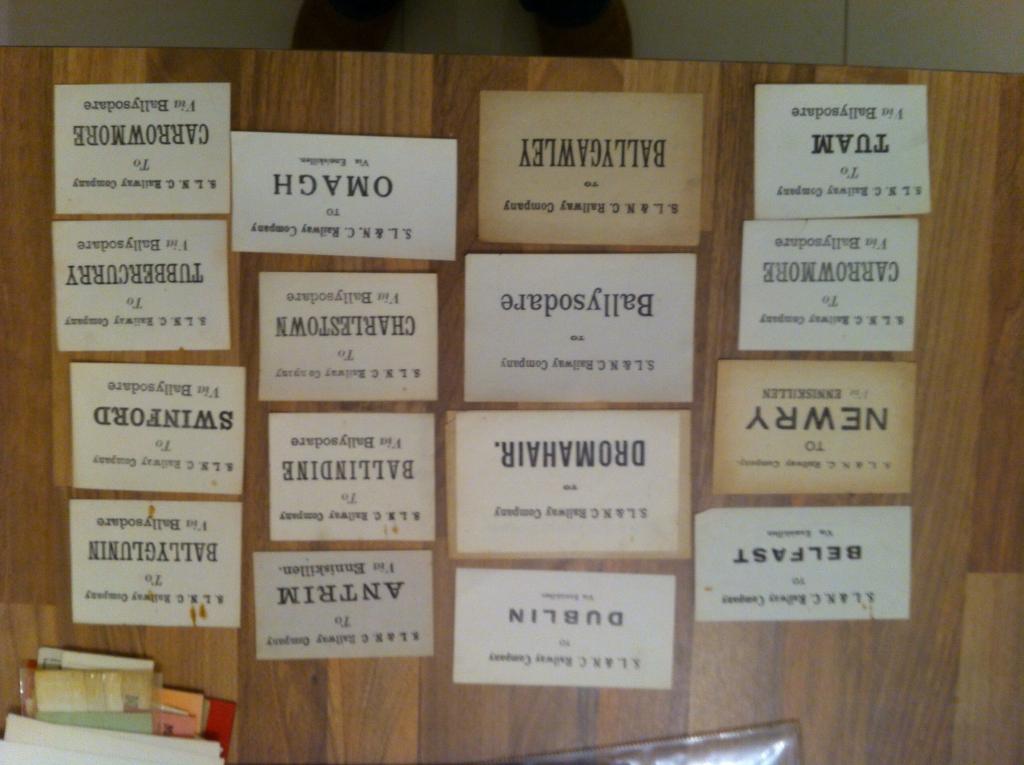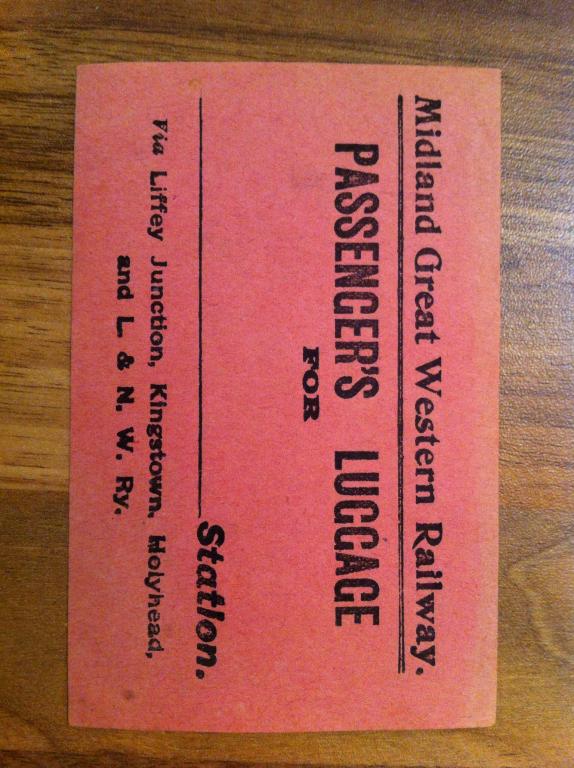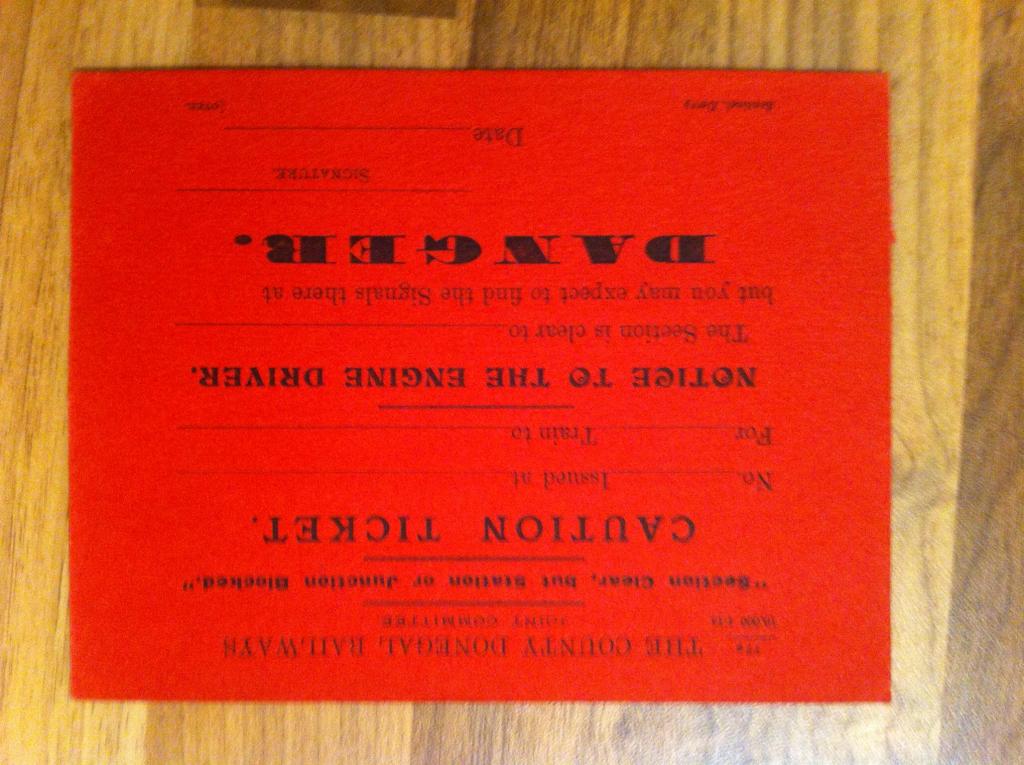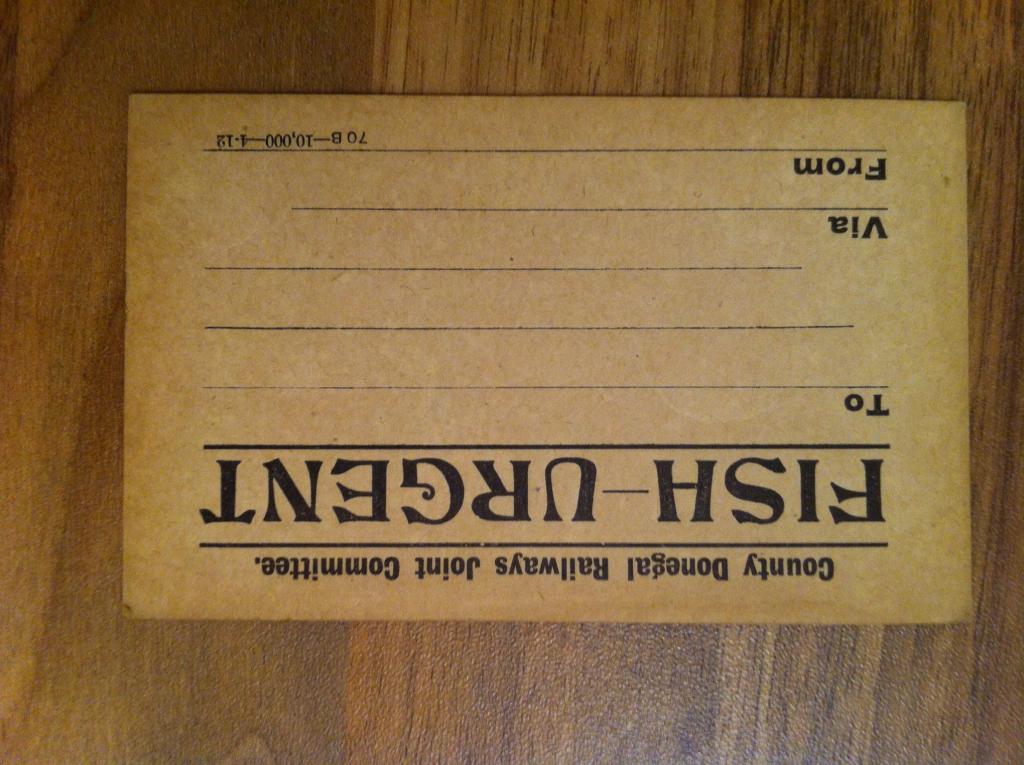-
Posts
15,810 -
Joined
-
Last visited
-
Days Won
393
Content Type
Profiles
Forums
Events
Gallery
Blogs
Store
Community Map
Everything posted by jhb171achill
-
-
That's the man. I had forgotten, myself, what his actual role was....
-
There is an extremely comprehensive set of photographs showing every stage of construction of this loco, taken by one of Bullied's cronies, in the National Railway Museum archives in York.
-
That's stunning! Looks real.
-
When built, they carried a shade of green not unlike that on the RPSI's 461 now - it was described as "mid-green" with frames etc, and wheels, all green. Lining was black and yellow, and number and name plates polished rims and numerals on dark blue backgrounds, as on 800 in Cultra. The tender had the letters "G S" in cream, with the full colour GSR crest mounted between them. When CIE took over, they received standard CIE green, as can now be seen on 800, in fact the paint job on it is authentic, having been done in Inchicore before it left CIE ownership; thus, obviously, the black and white CIE lining is authentic! CIE replaced the GS and crest with a standard gold-lined, light green "flying snail". They repainted the backgrounds on the numberplates from blue to red on 801 and 802, but not 800, which remained blue until withdrawal. Modellers beware: 800 as it is in Cultra has CIE livery, but G S on the tender instead of a "snail". The UFTM put that there. If it was to be in GSR livery, the green would be lighter and more blueish tinted, and the lining would be yellow and black.
-
Very interesting, bsgsv. I had often wondered about not only that, but a few other aberrations in the GSW numerical list. The MGWR seemed a little more clear on what was rebuilt or not, but there has been a tradition at Inchicore from GSWR times right through to the present day of vehicles appearing in various incarnations, with up to three or four running numbers, within their lifetime. The Enterprise genny vans are the latest!
-
Wow!!!!!!!! Think how space-age they must have looked when new in an Inchicore populated 100% by plain grey, unlined, unnamed locomotives of all shapes and sizes.....
-
So, am I right in thinking that if the Dun Laoghaire city fathers believe they can attract cruise ships, since same won't fit, it means said city fathers are even thicker than most local politicians? And that's saying something!! :-)
-
It became an ambulance vehicle, from memory, early sixties but I'd have to check for sure. It was originally a tricompo. If you look at the compartment side window profile, and the first two compartments you'll see they have wider seats and more leg room. They were firsts. Next compartments were second class, and there was another 2nd class compartment where the (RPSI installed) disabled loo now is. The open bit was always thus, with fixed seats, third class. The conversion for Knock Specials was achieved by removing these seats and installing double doors each side instead of single doors.
-
Love the weathering, Nelson - extremely realistic.
-
Experience with cruise liners worldwide shows that while any country where they land does indeed benefit, the port area often doesn't because, as mentioned above, the people simply get out of the tub and into a bus, to go and spend their dollars inland. The benefit to the actual port of Dun Laoghaire of cruise ship passengers is, I hope, likely to be tangible, but I wouldn't get over excited by it....
-
Broadly speaking, GSWR carriages built before about 1910 had the roof profile as seen on 836, or for those who have been inside the RPSI's Mullingar Shed, 813. Later, the higher distinctive design as seen on 1287, 1097 and 1142. These were not built for the Rosslare Express - they were later. The special set (five carriages) for the Rosslare Express were specially constructed at Inchicore for that purpose in 1906. The RPSI's 861, currently under long term restoration, is the sole survivor, one of very very few twelve-wheeled carriages ever to run in Ireland. The livery 836 used to have was not correct, in that it wouldn't have had cream upper panels, and the lining had the wrong colours and style. The procedure regarding liveries for these coaches was this: the GSWR's standard livery was as shown on 836 now - this is authentic - sadly, one of the few properly authentic liveries in preservation. After the Rosslare Express was introduced, white upper panels began to appear on main line stock (which would not include carriages like 836). However, the popularity of this was such that it began to spread to other main line stock also, and by the time the GSWR was about to become part of the GSR, it was widespread. For obvious reasons, few if any six-wheelers received the cream upper panels. It is likely that 1142 and 1097 had cream upper panels originally, but not certain; they could well have been placed in traffic in plain "lake". When the GSWR took over everything, for a short while Broadstone (deep maroon by then - not dissimilar) and Grand Canal Street (mid-maroon) just used up what paint they had, but with the new GSR numerals, crest and lining style borrowed straight from Inchicore, but this soon gave way to a deep maroon for all, i.e., as far as GSWR stock was concerned, a bit lighter and more reddish. I suspect it was similar to what the MGWR had been using since they abandoned brown in 1918. Just as the GSWR had its own "main line" style, soon the GSR followed suit, and very soon a GWR-style chocolate and cream scheme was introduced for main line stock only - other stock remained the deep maroon. GSR crests, large class numerals on doors, and gold shaded coach numbers were standard on both liveries. The only difference was that the GSR used black lining on the choc / cream livery instead of gold on the rest. Once the "steels" (the wooden framed but steel-clad "Bredins") came out, the initial batch in 1933, then more in 1935 and 1937, the company introduced a new livery for carriages which was as good as identical to the English LMS, and by extension, the NCC. This mid-maroon, which modellers may purchase in any shop in England that advertises authentic "LMS red", was a good bit lighter than the old shade. By degrees, everything started being painted in this colour, six-wheelers and all; no cream or cream panels on any of it. Lining was identical to LMS style. Now we're into 1945 and the dark Brunswick green of CIE appears, with light green lines above and below windows; the upper one being thicker than the lower one. these, as well as numerals and "snails" were themselves lined in gold. Hope that helps.
-
Wow! excellent
-
Must see what I have on the SLNCR......
-
CIE coach livery in the late 1950s
jhb171achill replied to David Holman's question in Questions & Answers
The Tyrconnell version is completely wrong on many counts. The numerals are Southern Railway (England); and the green is closer to that than anything that ever ran this side of the sea. The roof on their coach is white, completely wrong for CIE, which should be black - how much more wrong can that be! The chassis side is green - again, no coach was ever painted that way by CIE - black is the colour, as Christy Moore might say. (or sing). They have black ends and footboards - the only correct details on their picture. As a result, an otherwise absolutely superb looking model - and one long overdue - looks like something off the Isle of Wight Railway. The other shade of pea green on their printed coach sides appears to have white lining and logo - both wrong, as is the lack of thin gold lining on the snail and (what should be eau-de-nil) lining. It's a shame when a manufacturer gets so completely wrong the most basic of details about any model - what it looked like. -
A varied career indeed, BSGSV.... I must try to dig out the actual stuff about 1097 I have somewhere - but 1924/5 it was. Many carriages of GSWR origin, including 1287 at DCDR (even more than 1097), and GSR and CIE coaches - also had varied careers. DCDR's 3223 has neither the identity or number it initially had by any stretch of the imagination. The open area was indeed to accommodate stretchers in Claremorris pilgrimage trains. "......there is someone on here who will be sold to answer any question you have......" Predictive text-speak for "ABLE to answer"!!!! (No, I don't know why either!!). I repeat: I issue a fatwa, nay ten fatwas, each more violent than the last, against whatever moron invented predictive text.... I'll go back and edit my initial post.
-
I hereby issue a fatwa against whoever invented adware, and graffiti.
-
Weshty, email me on that....
-
Knowing me, I'd probably go down there and come back with a few bananas, a pack of dishcloths, a bag of potatoes and a tin of sardines! Ah! Forgot the solderer........!
-
Thanks, folks!
-
Correct, minister. I have a GSWR carriage diagram book which tells the same story. It was common practice for "taken-over" works to continue with pre-amalgamation patterns. One only has to look across the pond at the number of locomotives turned out under British Rail, whose designs were often from SR, GWR, LMS and LNER.
-
Jawfin, queries are one of the very reasons to be on here, so ask away at any time - there is someone on here who will be sold to answer any question you have. 1097 was started in 1924, under the GSWR, but entered traffic just into the new year in 1925. It would have been painted in the GSWR "dark crimson lake" carried by it and 836. It would have had GSWR lining, as per 836, but probably a GSR crest if it had then been ready. At first repaint, a comparatively new mainline coach like this would have received the short-lived chocolate brown and cream, maroon later.
-
They were a little perforated tab they tore off to show it was used, a bit similar to punching tickets. Incidentally, I can hardly get into IRM the last few days due to an adware virus called "smart compare". Anyone know how to get rid of it? I've tried uninstalling it but it keeps reappearing....
-
In comparison to Belmullet, Cavan is like downtown Manhattan!
-
CIE used letters to denote various types of goods stock, DiveController. The standard pattern steel-framed, wooden-bodied vans produced in large numbers in the fifties and early sixties were those shown above, which were designated as design "H". They replaced hundreds of older goods vans from CIE constituent companies and the GNR, and along with the "Pallet Vans" constituted almost the entire van fleet by 1970. If you look to the left of "H" van 18102 above, you'll see a brown "palvan" beside it. It is quite simply impossible to model the CIE goods scene in the 60s and 70s without large numbers of these standard vans in all goods trains. It's like trying to model the Supertrain era without any Mk. 2 coaches, or "A", 141 or 071 class locos.
.png.c363cdf5c3fb7955cd92a55eb6dbbae0.png)




